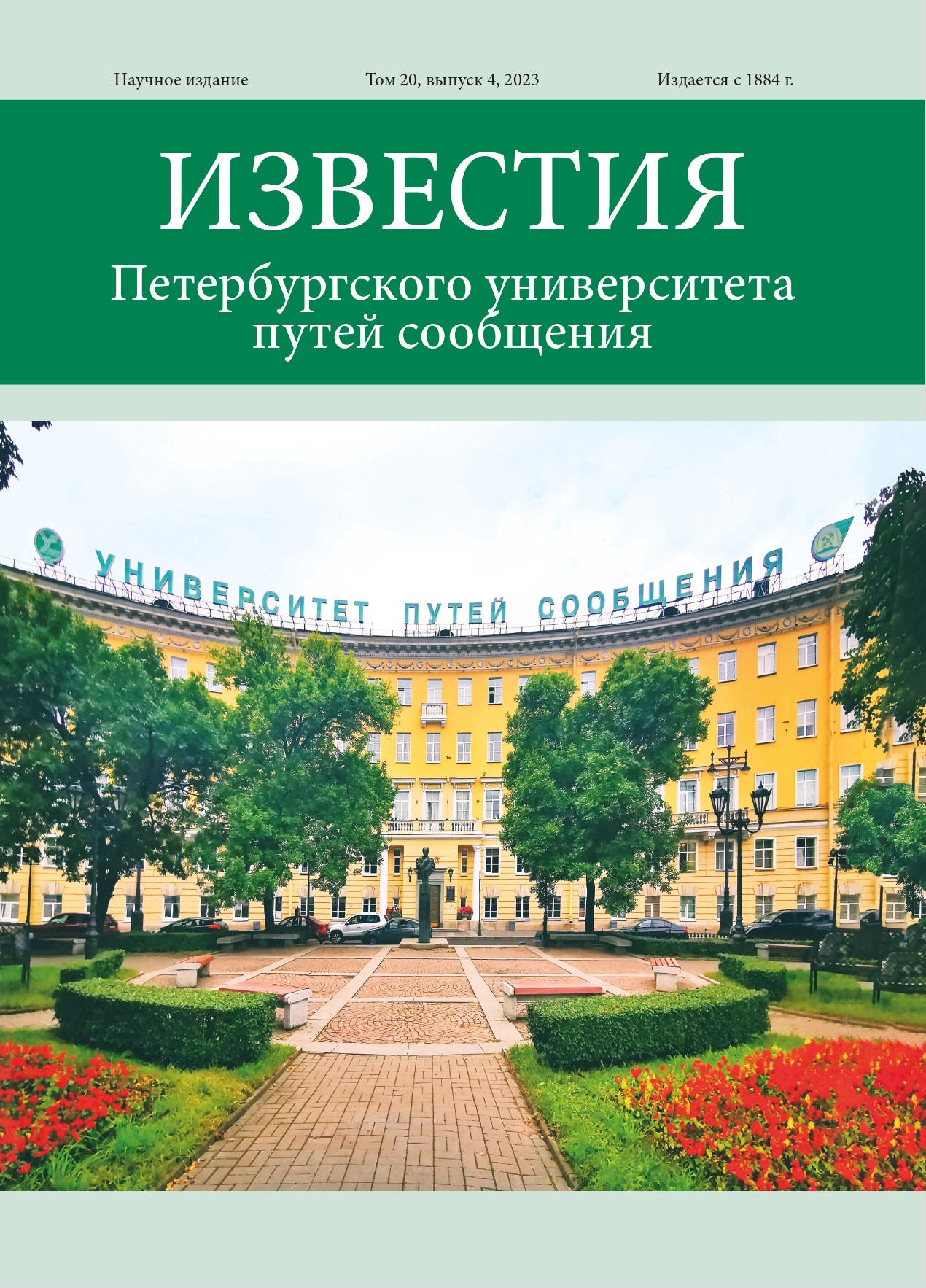Russian Federation
Russian Federation
Russian Federation
SINEREF-center LLC
Russian Federation
Purpose: To consider structural and technological aspects of construction of steel reinforced concrete span of road bridge over the Vetluga River. To consider the issues of creating a computational model in the Midas Civil program complex with regard to the presented requirements to meet the requirements of GOST and SP. To give a detailed analysis of the stress-strain state of the model on the basis of calculation of the created model. Methods: Analysis of the design and allocation of the main parameters; comparison of the calculation models obtained taking into account the stage of concreting of the monolithic reinforced concrete slab of the roadway and without taking into account the stage of work. Results: The stress-strain state has been analyzed, and the structural and technological features of the erection of a road bridge over the Vetluga River have been considered. It is established that stresses in metal main girders increase significantly in comparison with the model that does not take into account the stages of erection. The combined operation of steel and reinforced concrete section starts only after the monolithic reinforced concrete slab of the roadway has gained strength. It is established that the development of cracks in concrete in the support zones caused by negative moments can be accounted for by reducing the elastic modulus of concrete in the support zones by 8 times. The change of stresses and strains in the structure by stages has been analyzed. The stresses and deformations arising in the structure during its erection are "inherited" from one stage to another when calculating by stages. Practical signifacance: The methods of creating a reliable calculation model of steel-reinforced concrete spans, reflecting the actual nature of the work of the structure both at the stage of construction and at the stage of operation, are shown. The methods described in the article can be recommended for creating a calculation model in the Midas Civil software package with consideration of the presented requirements to meet the requirements of GOST and SP, as well as to avoid accidents at all stages of the life cycle of the structure.
Steel-reinforced concrete span structure, highway, multi-span bridge, computational model, stressstrain state, steel-reinforced concrete
1. Ovchinnikov I. I. Analiz avarii mostovogo sooruzheniya iz-za neucheta stadiynosti ego vozvedeniya / I. I. Ovchinnikov, Sh. N. Valiev, O. N. Gerasimov i dr. // Dorogi i mosty. - 2022. - № 48. - S. 140-166.
2. SP 35.13330.2011. Mosty i truby. Aktualizirovannaya redakciya SNiP 2.05.03-84. Mosty i truby. - M.: OAO «CPP», 2011.
3. Morid A. M. Opornye diafragmy v zonah razdeleniya stalezhelezobetonnyh proletnyh stroeniy / A. M. Morid // Nauka i sovremennost'. - 2012.
4. GOST R 59788-2021. Dorogi avtomobil'nye obschego pol'zovaniya. Mostovye sooruzheniya. Pravila rascheta stalezhelezobetonnyh proletnyh stroeniy. - Vveden s 1.01.2022 // Informacionnaya sistema Norma CS.
5. Lykova A. V. Analiz sposobov ob'edineniya betona i stali v stalezhelezobetonnyh mostah / A. V. Lykova, L. P. Abasheva // Covremennye tehnologii v stroitel'stve. Teoriya i praktika. - 2016. - № 2. - C. 86-91.
6. Kozlov A. V. Raschet stalezhelezobetonnyh mostov s uchetom sdviga plity po verhnemu poyasu balki / A. V. Kozlov // Stroitel'naya mehanika i konstrukcii. - 2018. - № 4. - C. 64-71.
7. Morid A. M. Issledovanie raboty stalezhelezobetonnyh proletnyh stroeniy mostov v programmnom komplekse Femap & Nastran / A. M. Morid, V. I. Popov // Nauka i sovremennost'. - 2012.
8. Krasnov S. N. Konstruktivnaya sistema stalezhelezobetonnyh mostov / S. N. Krasnov, E. S. Krasnova, E. A. Vihrov // Vestnik Har'kovskogo nacional'nogo avtomobil'no-dorozhnogo universiteta. - 2012. - № 58. - C. 65-69.
9. Beluckiy I. Yu. Konstruktivno-tehnologicheskie osobennosti proektov rekonstrukcii stalezhelezobetonnyh mostov v razrabotkah TOGU / I. Yu. Beluckiy, I. V. Lazarev, A. V. Lapin // Dal'niy Vostok. Avtomobil'nye dorogi i bezopasnost' dvizheniya. - 2020. - S. 72-77.









